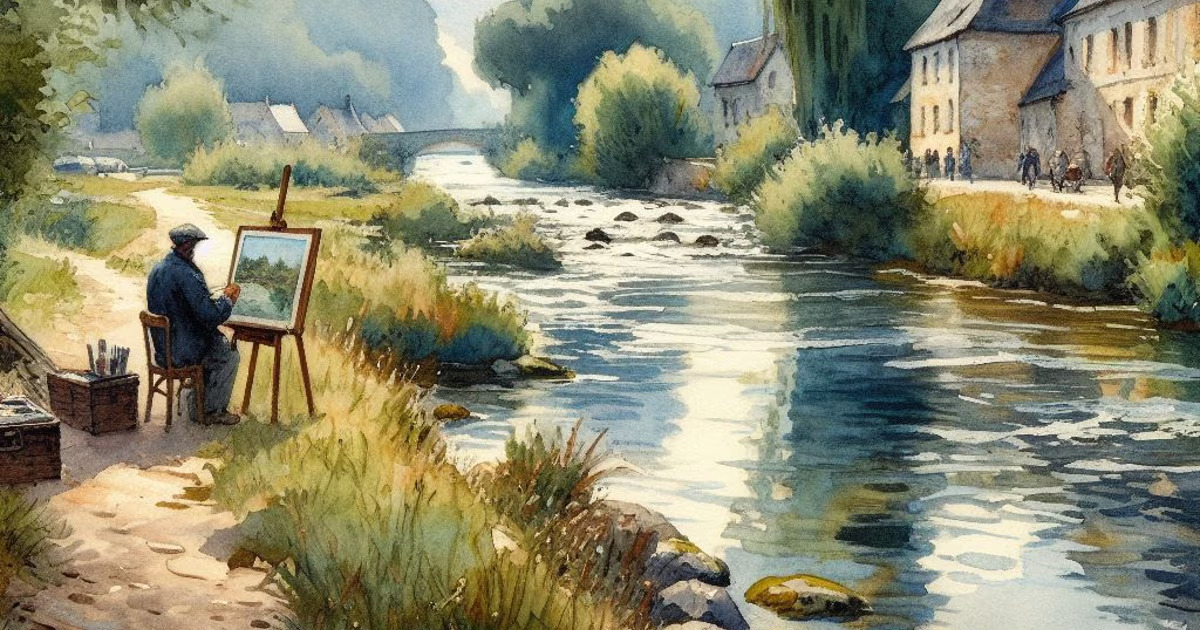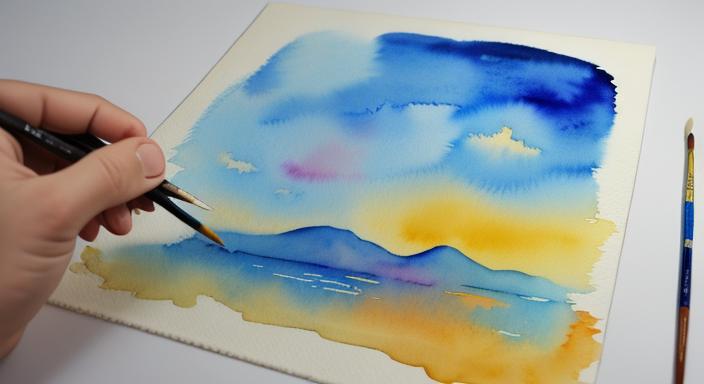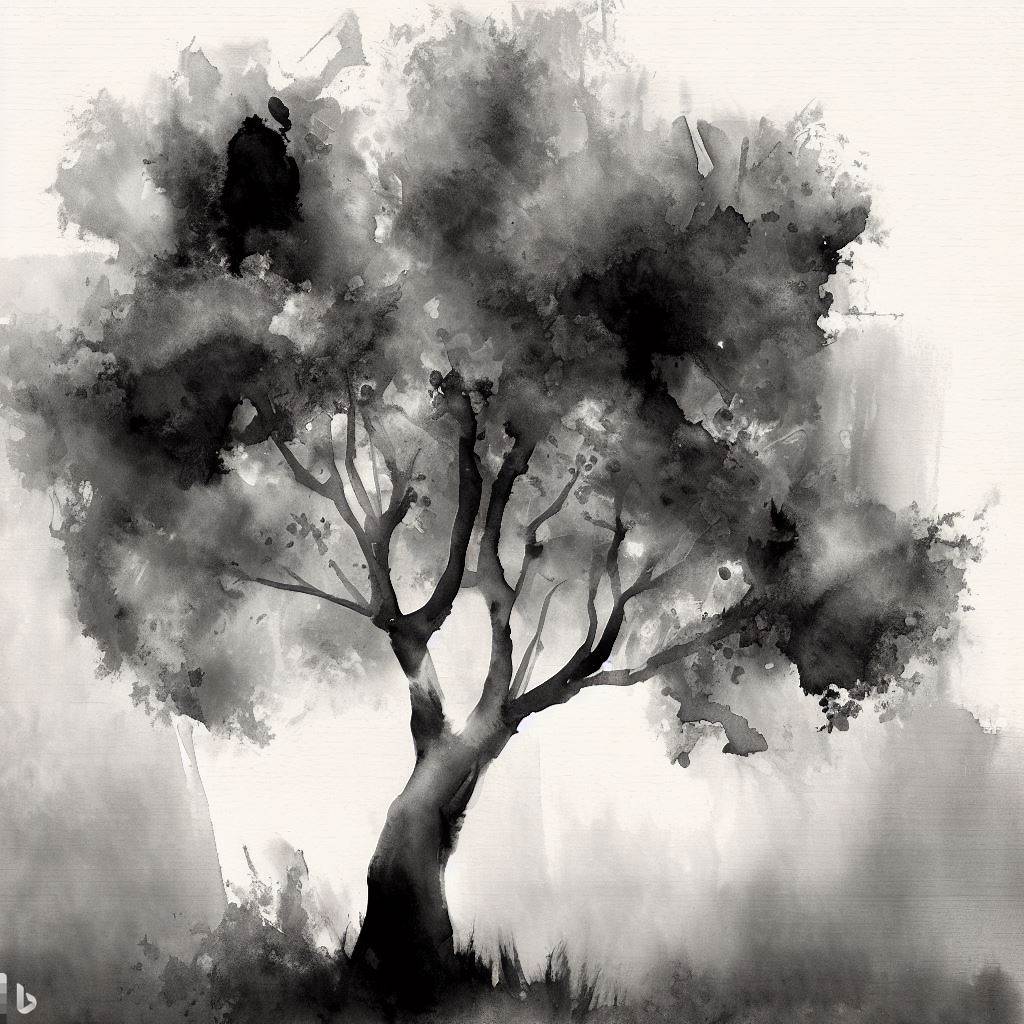Watercolor painting is a beautiful and expressive art form that can be enhanced by using salt to create unique textures. Salt is an affordable and easy-to-use material that can add depth and interest to your watercolor paintings. In this article, we will discuss the steps involved in using salt to create watercolor texture, as well as some tips and tricks to help you get the most out of this technique.
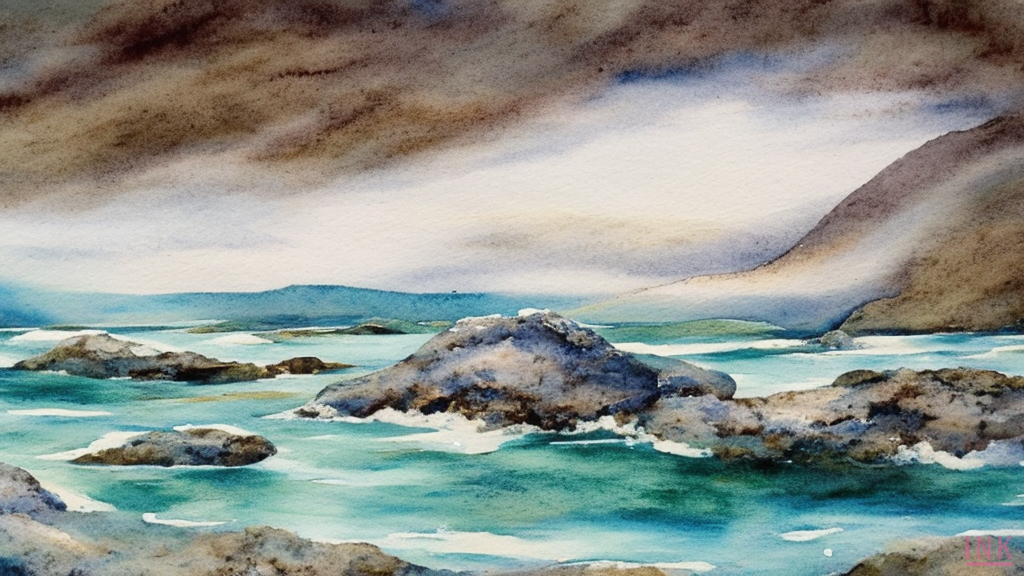
Materials to create watercolor textures using salt
To create watercolor textures using salt, you will need the following materials:
- Watercolor paints: Choose a variety of colors to create vibrant and interesting effects.
- Watercolor paper: It is important to use high-quality watercolor paper that can withstand water and salt without getting damaged.
- Salt: Experiment with different types of salt, such as table salt, sea salt, or rock salt, to achieve different effects.
- Brushes: Select a range of brushes with different sizes and shapes to apply the paint and salt.
- Water: Use water to wet the paper before applying the paint and salt.
Steps to Create Textures
Follow these steps to create watercolor textures using salt:
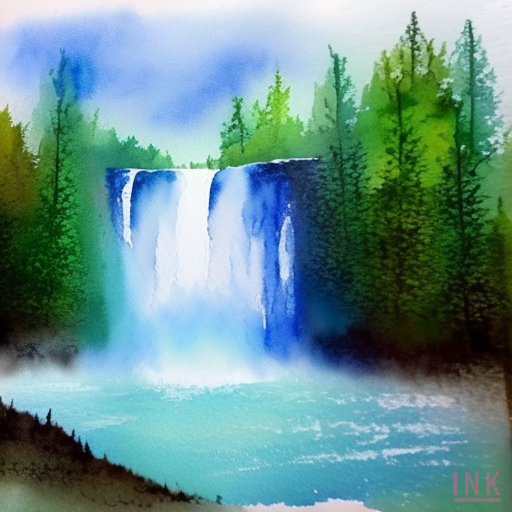
- Prepare the paper: Wet the watercolor paper with a light coat of water. This helps the paint and salt to spread and blend more easily.
- Apply the paint: Use your brushes to apply watercolor paint to the wet paper. Experiment with different colors and techniques to create interesting effects. You can apply the paint in a controlled manner or allow it to spread and mix on its own.
- Sprinkle salt: While the paint is still wet, sprinkle salt over the surface of the painting. You can use a light sprinkle for small, subtle textures or a heavy sprinkle for larger, more dramatic textures. Try different types of salt to see which one works best for the desired effect.
- Allow it to dry: Let the painting dry completely. This is an important step, as it allows the salt to react with the paint and create the desired texture. Be patient and avoid touching the painting while it dries.
- Brush away the salt: Once the painting is completely dry, gently brush away the salt using a clean and dry brush. You will see the textured patterns that the salt has created on the surface of the painting.
Tips to Create Watercolor Texture with Salt
Here are some additional tips to help you achieve the best results with salt and watercolor texture:
- Experiment with different materials: In addition to different types of salt, you can also try incorporating other materials such as alcohol, plastic wrap, or wax resist to create unique textures and effects.
- Mix colors on the paper: Instead of mixing colors on the palette, you can apply different colors directly onto the wet paper and allow them to blend naturally. The salt will interact with the pigments, creating beautiful and unexpected color variations.
- Vary the salt application: You can create different patterns by varying the way you apply the salt. For example, you can sprinkle it uniformly across the entire painting or focus on specific areas for more concentrated textures.
- Combine techniques: Salt works well with other watercolor techniques. You can create washes, glazes, or even incorporate salt into your wet-on-wet or wet-on-dry techniques to add texture and interest to your paintings.
Different Effects
The type of salt that you use will affect the effect that you create. For example, coarse salt will create larger, more dramatic textures, while fine salt will create smaller, more delicate textures.
You can also experiment with different amounts of salt to create different patterns. For example, if you sprinkle a light dusting of salt over the wet paint, you will create a subtle, even texture. If you sprinkle a heavier amount of salt over the wet paint, you will create a more dramatic, uneven texture.
Experimentation
It is important to experiment with different techniques and materials to create your own unique watercolor paintings. There are no right or wrong answers when it comes to using salt to create texture. The most important thing is to have fun and be creative.
Here are a few ideas to get you started:
- Use different colors of salt to create a rainbow effect.
- Use different shapes of salt to create geometric patterns.
- Use salt to create the illusion of depth or texture in your paintings.
Conclusion
Using salt to create watercolor texture is a fun and easy technique that can add depth and interest to your paintings. By experimenting with different types of salt and different amounts of salt, you can create a wide range of textures and patterns. The salt interacts with the wet paint, creating unique effects that are not easily achieved with traditional brushwork alone. We encourage you to try this technique for yourself and see what unique effects you can create in your watercolor paintings.
